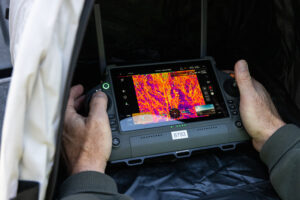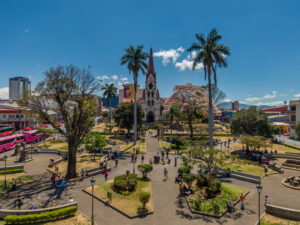By
Parks have always been the heart of our communities—places to relax, play, and connect. But as cities grow and change, so do the needs of the people who use these green spaces. Today, many cities are leveraging data to plan, design, maintain, and program parks in smarter, more responsive ways. It’s no longer about guesswork or tradition; it’s about understanding how people actually use parks and making improvements that truly matter. Let’s explore how cities across the country are using data to further enhance the place parks and recreation hold as vibrant, inclusive, well-loved hubs within their communities.

You don’t always need a big city budget to make a big impact. Even smaller cities are making big strides using data to promote fairness in park access. Batesville, Arkansas, mapped out neighborhoods with limited green space and used that information to win voter support for a $25 million park improvement plan focused on those underserved areas. Across the country, tools like the Trust for Public Land’s ParkScore help cities benchmark their park systems and identify where improvements are most needed. New technologies—from drones counting trail users to AI predicting playground wear and tear—are helping cities stay one step ahead in keeping parks safe, welcoming, and well-maintained.

In cities like San Jose and San Leandro, California, geospatial intelligence platforms are transforming how parks are managed. These cities use tools like CityDash.ai to track park usage through anonymized movement patterns, creating heatmaps that reveal visitor density and hourly foot traffic trends. This data allows city officials to allocate resources more efficiently, directing maintenance crews and programming efforts to the areas with the highest demand. By integrating geolocation insights with service requests and permit data, these municipalities optimize park upkeep and ensure that recreational spaces remain safe and inviting for all visitors.

New York City has taken transparency and community engagement to the next level by making its parks data publicly available. Through tools like the Vital Parks Explorer, residents can see which neighborhoods have the most green space, which playgrounds are due for repairs, and where new trees are planted. This data-driven approach supports major initiatives like the $1 billion “Let’s Swim NYC” program, which targets pool upgrades in neighborhoods most affected by heat. By sharing this information openly, NYC empowers residents to advocate for their parks and helps ensure investments are made equitably across the city.

In Texas, cities like Arlington and Plano have embraced GIS dashboards (Geographic Information Systems) that use maps and location-based data to analyze information that allows park staff to monitor the condition of every trail, bench, and playground in real time. GIS systems capture, store, analyze, and display information from surveys, satellite images, and digital maps to visualize spatial patterns and relationships to inform decisions using data. Broken equipment or overgrown paths show up immediately on digital maps, so repairs can happen quickly, no more waiting for complaints to pile up. Meanwhile, Bellevue, Washington, takes a community-first approach by gathering survey data to tailor recreation programs to what residents actually want. Whether it’s more nature hikes, wellness classes, or family-friendly events, the city uses data to design offerings that get people out and moving.

As more cities embrace data, the future of parks and recreation looks brighter and smarter than ever. No longer are decisions based on guesswork or tradition alone; instead, they’re guided by real insights into how communities use and value their green spaces. This means more equitable distribution of resources, better maintenance schedules, and recreation programs that truly reflect the interests of residents. It also opens the door for greater community involvement, as many cities now share their data publicly, inviting residents to become active participants in shaping their parks. From AI-powered maintenance predictions to interactive maps that highlight play deserts, data is turning parks into dynamic, responsive places that grow and evolve alongside their communities. So next time you visit your local park, remember that behind every bench, trail, and splash pad is a world of data working quietly to make your experience more welcoming and wonderful.
Magazine
Playmaker Events
Connect with playmaker